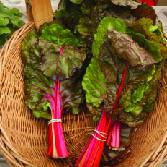-
CATEGORY ::
- All Seeds /
- All Flower Seeds /
- All Ranunculus Seeds

Ranunculus Seeds - Mache
SEASON
Annual
USDA ZONES
5 - 10
HEIGHT
12 - 16 inches
BLOOM SEASON
Spring
BLOOM COLOR
Mix
ENVIRONMENT
Partial shade
SOIL TYPE
Moist, well-drained, pH of 5.6 - 6.5
DEER RESISTANT
Yes
HOUSE PLANT
Yes
SEASON
Annual
USDA ZONES
5 - 10
HEIGHT
8 - 10 inches
BLOOM SEASON
Spring
BLOOM COLOR
Mix
ENVIRONMENT
Partial shade
SOIL TYPE
Moist, well-drained, pH of 5.5 - 6.5
DEER RESISTANT
Yes
HOUSE PLANT
Yes
About...
Ranunculus (Ranunculus Asiaticus Mache Mix) - These small annuals give quite the colorful show in early spring. Grown from Ranunculus seeds, these small flowers are perfect for containers. Their common name is Persian Buttercup, and this mix features blooms of bright orange, scarlet and yellow with dark green refined foliage.
MORE RANUNCULUS OPTIONS
Planting Directions
TEMPERATURE
50 - 60F
AVERAGE GERM TIME
14 - 28 days
LIGHT REQUIRED
Yes
DEPTH
Do not cover the seed but press into the soil
SOWING RATE
3 - 4 seeds per plant
MOISTURE
Keep seeds moist until germination
PLANT SPACING
12 inches
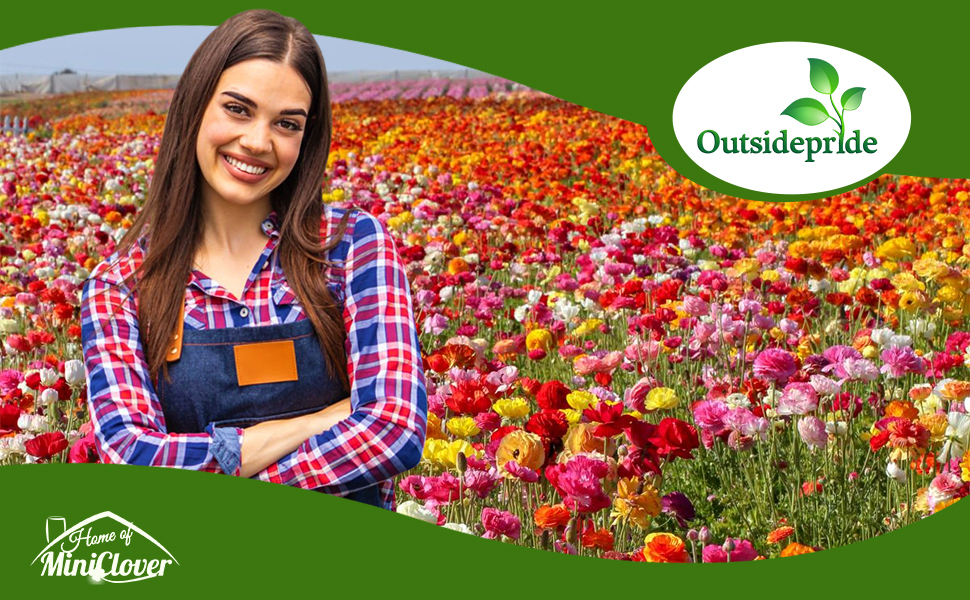
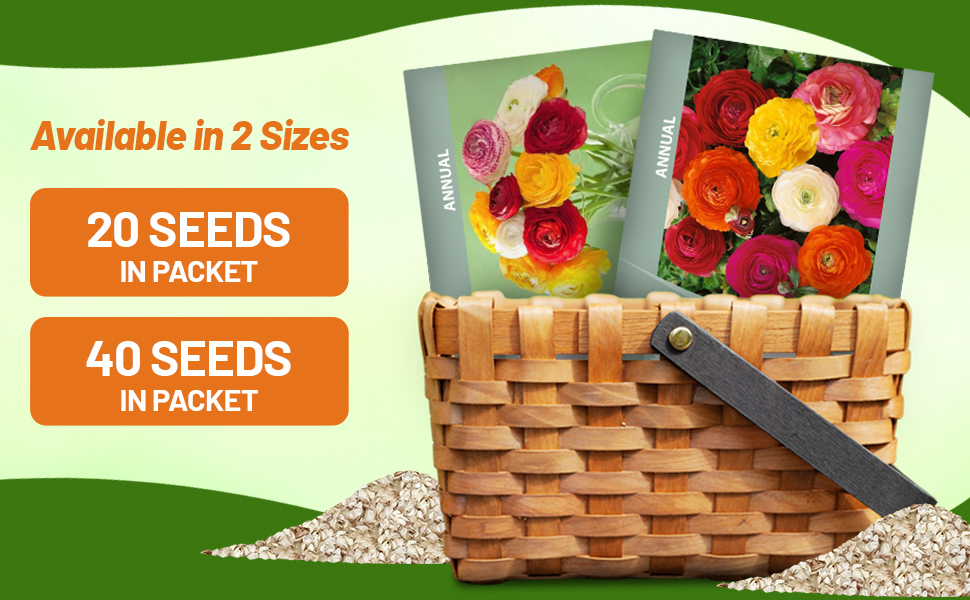
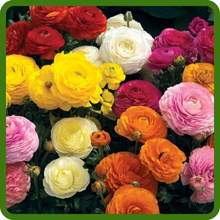
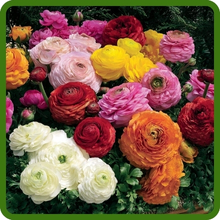
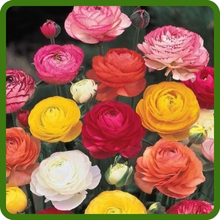
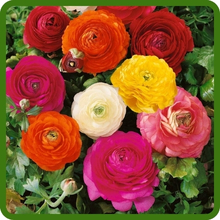
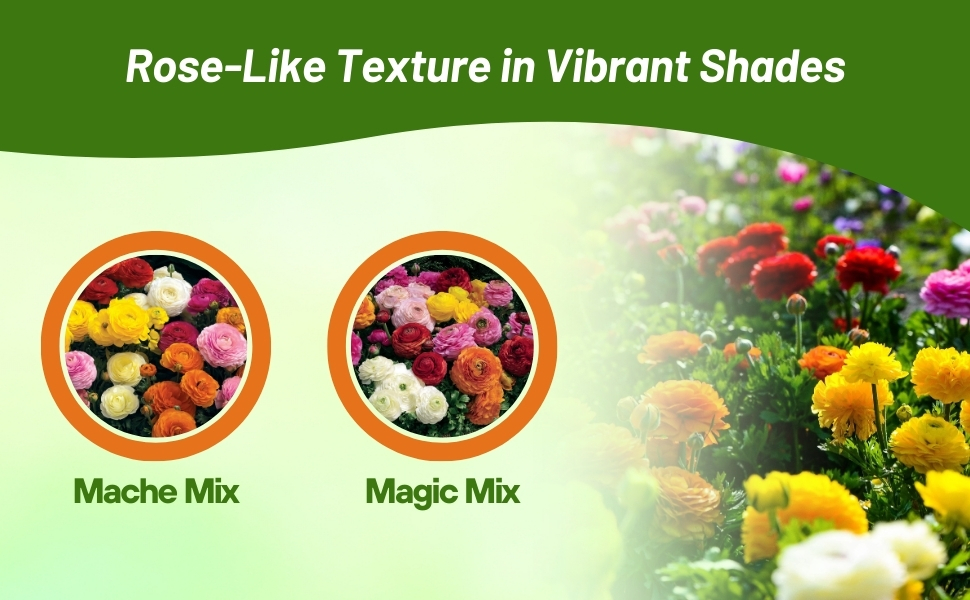
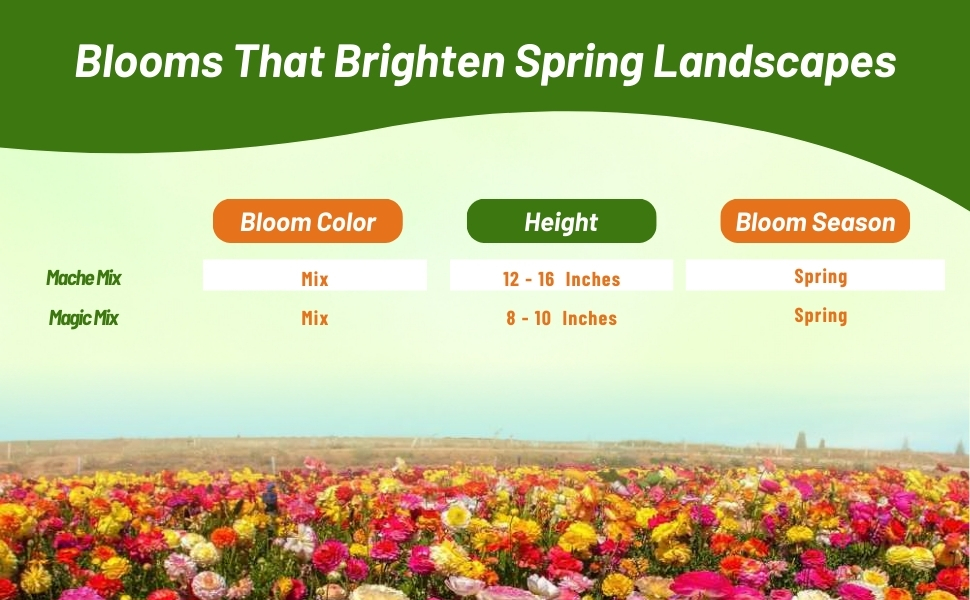
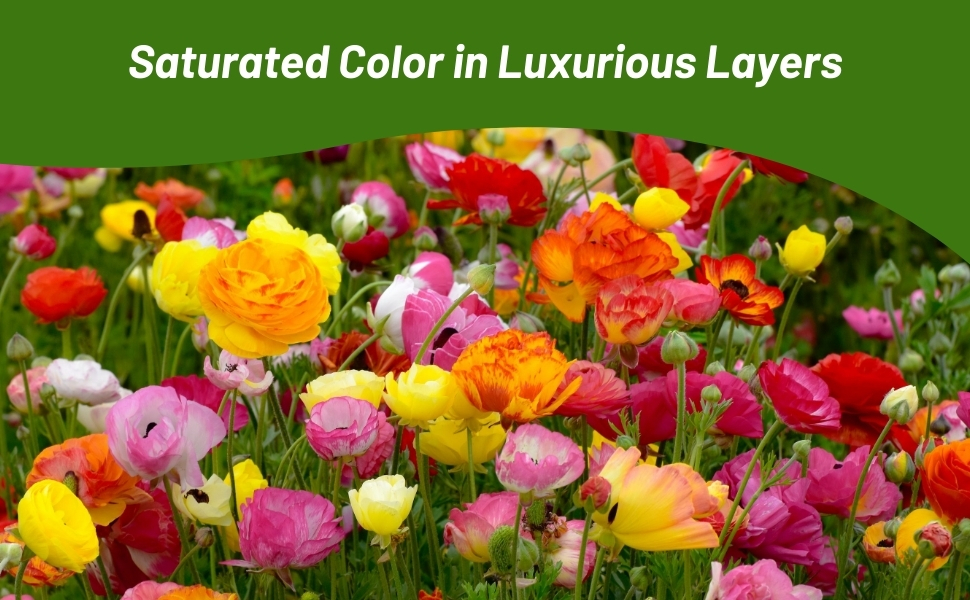
Ranunculus (Ranunculus Asiaticus Mache Mix) - These small annuals give quite the colorful show in early spring. Grown from Ranunculus seeds, these small flowers are perfect for containers. Their common name is Persian Buttercup, and this mix features blooms of bright orange, scarlet and yellow with dark green refined foliage. Ranunculus form mounded plants, reaching 12 - 16 inches in height and 10 - 12 inches in width. The Persian Buttercup flower is formed of papery petals layered one on top of another, and they are 2 - 3 inches across. Absolutely gorgeous! They are perfect for cut flowers and have a long vase life.
How To Grow Ranunculus From Seeds: Sow Ranunculus flower seeds in late fall or winter. Ranunculus flower about 5 months after being sown from flower seed. The key to growing Ranunculus from flower seed is growing them in cool temperatures. Ranunculus seed needs to germinate between 50 - 60F and then grow on at 60F days and 40F nights. Use sterile potting soil and trays. Sow Persian Buttercup seeds on the surface of the soil and gently press the flower seeds in. Keep the trays out of direct sunlight and always moist. Transplant Ranunculus seedlings into larger pots when 4 - 5 true leaves appear. Ranunculus does better as a container plant. It will thrive in the cool of spring but will be done when the temperatures begin to warm up. Ranunculus Care: Whether grown in the ground or in containers, Ranunculus plants benefit from mulch which helps keep the roots cool. After blooming, when leaves begin to yellow, cut the plant down low to the soil.
Common Questions
What are some good companion plants for ranunculus?
Plants such as candytuft, snapdragon, forget me nots, calendula, oriental poppies, pansies, primrose, sweet peas, toadflax, Chinese forget me nots and African daisy all work well with these flowers.
What are some common ways to use ranunculus in the landscape?
Beds, borders, containers, cottage gardens, Mediterranean gardens or a cutting garden are all great ways to use the ranunculus flowers.
Do I need to deadhead my flowers?
Yes, you will want to deadhead spent blooms to encourage a longer bloom season.
Are plants toxic to animals?
Yes, ranunculus is toxic to cats, dogs, horse and humans. These can cause irritation and dermatitis when the sap contacts skin. Ingesting large amounts of plant can also cause gastrointestinal distress. It is important to handle it with care and keep out of reach of kids and pets.
Are these flowers deer resistant?
Yes, deer and rabbits tend to avoid these flowers.
Planting Directions
TEMPERATURE
50 - 60F
AVERAGE GERM TIME
14 - 28 days
LIGHT REQUIRED
Yes
DEPTH
Do not cover the seed but press into the soil
SOWING RATE
3 - 4 seeds per plant
MOISTURE
Keep seeds moist until germination
PLANT SPACING
10 inches
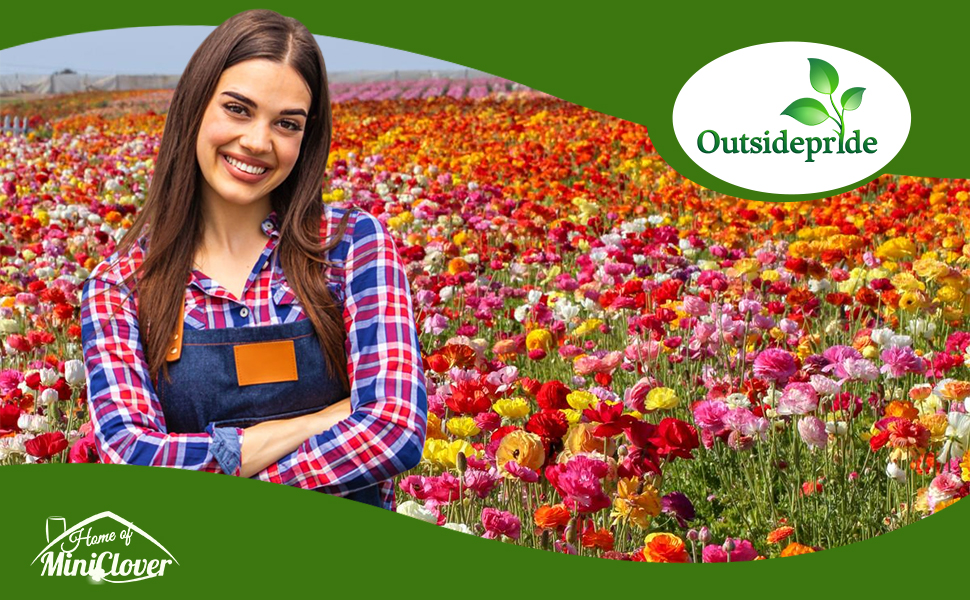
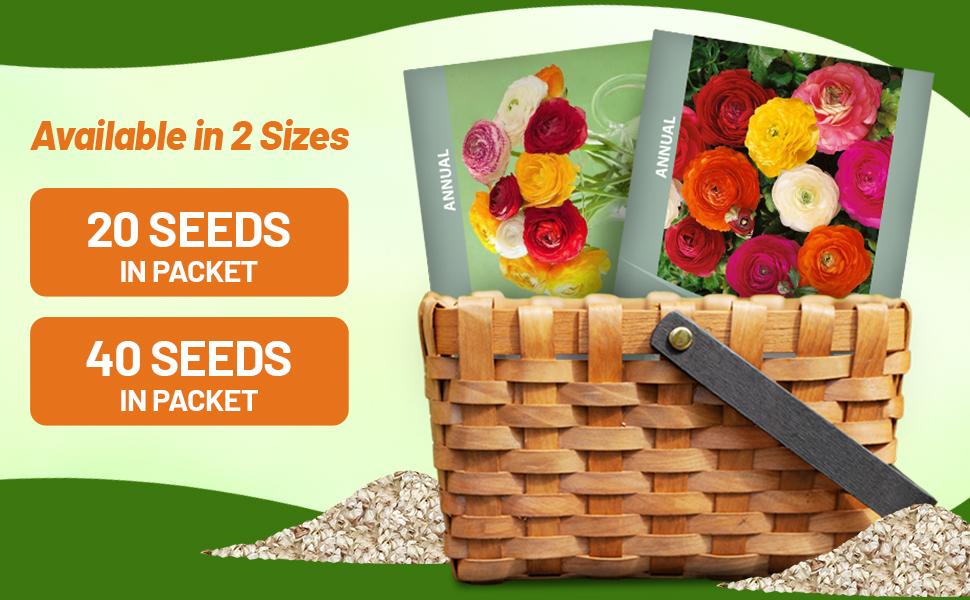
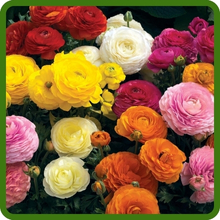
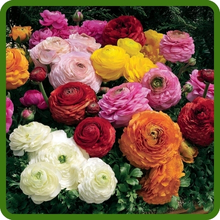
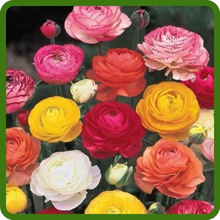

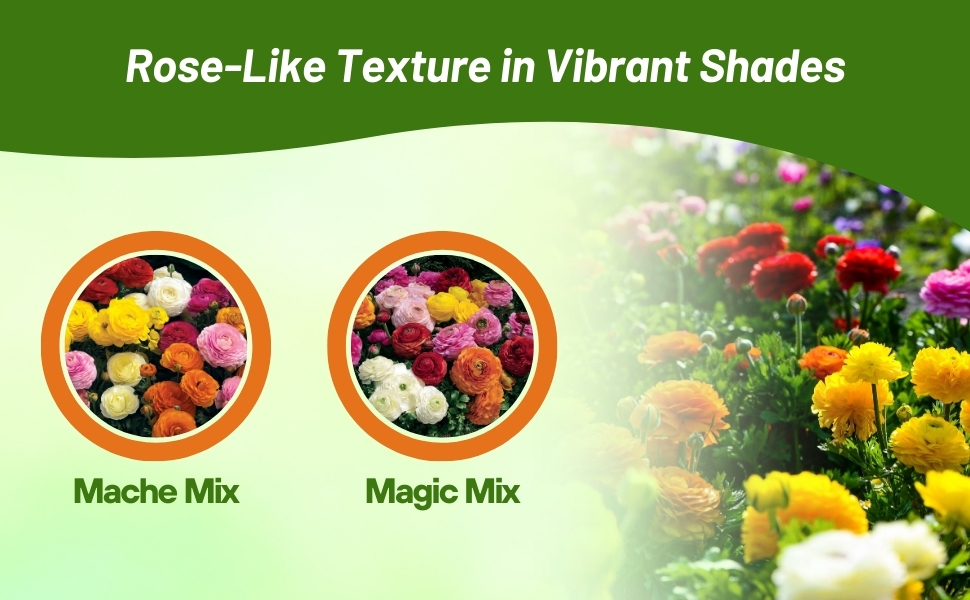

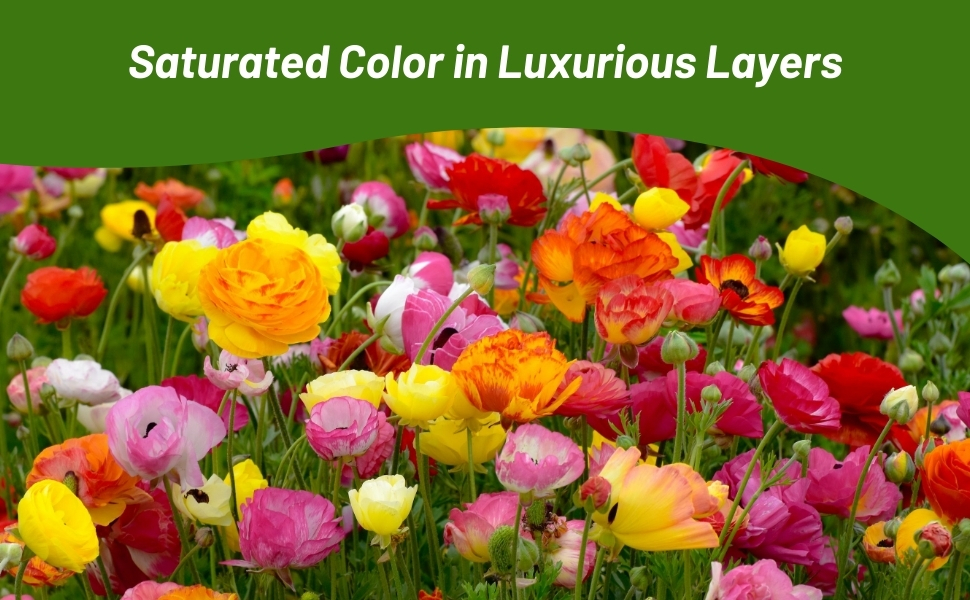
Ranunculus (Ranunculus Asiaticus Magic Mix) - Also known as Persian Buttercup, these sweet colorful annuals cannot be more fun and rewarding to grow from Ranunculus flower seeds. This Persian Buttercup mix features dwarf, mounding plants with a refined foliage and the multi-petaled whorled blooms ranging in colors: red, rose, orange, yellow, pink and white. This dwarf variety grows on top of 6 - 8 inch stems, so there is still enough stem to cut, and Ranunculus make a beautiful cut flower as well. Ranunculus are among the most beautiful of all flowers!
How To Grow Persian Buttercups: Sow Ranunculus seeds in winter. Ranunculus Magic Mix flower about 3 - 4 months after being sown from flower seed. The key to growing Ranunculus from flower seed is growing them in cool temperatures. Ranunculus flower seeds needs to germinate between 50 - 60F and then grow on at 60F days and 40F nights. Use sterile potting soil and trays. Sow Ranunculus Asiaticus seeds on the surface of the soil and gently press the flower seeds in. Keep the trays out of direct sunlight and always moist. Transplant Ranunculus seedlings into larger pots when 4 - 5 true leaves appear. Ranunculus does better as a container plant. It will thrive in the cool of spring but will be done when the temperatures begin to warm up. Ranunculus makes a great houseplant when it is grown in indirect light. Ranunculus Flower Care: Whether grown in the ground or in containers, Ranunculus plants benefit from mulch which helps keep the roots cool. After blooming, when leaves begin to yellow, cut the plant down low to the soil.
Common Questions
What are some good companion plants for ranunculus?
Plants such as candytuft, snapdragon, forget me nots, calendula, oriental poppies, pansies, primrose, sweet peas, toadflax, Chinese forget me nots and African daisy all work well with these flowers.
What are some common ways to use ranunculus in the landscape?
Beds, borders, containers, cottage gardens, Mediterranean gardens or a cutting garden are all great ways to use the ranunculus flowers.
Do I need to deadhead my flowers?
Yes, you will want to deadhead spent blooms to encourage a longer bloom season.
Are plants toxic to animals?
Yes, ranunculus is toxic to cats, dogs, horse and humans. These can cause irritation and dermatitis when the sap contacts skin. Ingesting large amounts of plant can also cause gastrointestinal distress. It is important to handle it with care and keep out of reach of kids and pets.
Are these flowers deer resistant?
Yes, deer and rabbits tend to avoid these flowers.
















